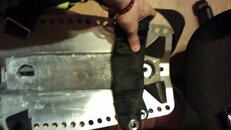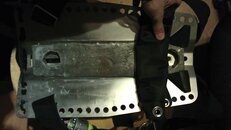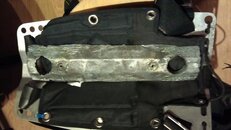ferris213
Contributor
Does anyone have any experience casting their own P weight? I have a DSS SS back plate with no STA and currently dive with about 2 or 3lb on a belt. I'm thinking of casting a small P weight to fit into the bottom of the channel in the plate.
What is the normal way of attaching the weight to the plate? Any tips on making a mould or casting it? I have searched a bit but only found a thread from about 10 years ago, all the links were dead...
A friend of mine has been smelting and casting different metals for a few years now so I'm aware and respectful of the safety issues involved in dealing with hot metal.
Any advice, tips or photos would be greatly appreciated!
What is the normal way of attaching the weight to the plate? Any tips on making a mould or casting it? I have searched a bit but only found a thread from about 10 years ago, all the links were dead...
A friend of mine has been smelting and casting different metals for a few years now so I'm aware and respectful of the safety issues involved in dealing with hot metal.
Any advice, tips or photos would be greatly appreciated!







